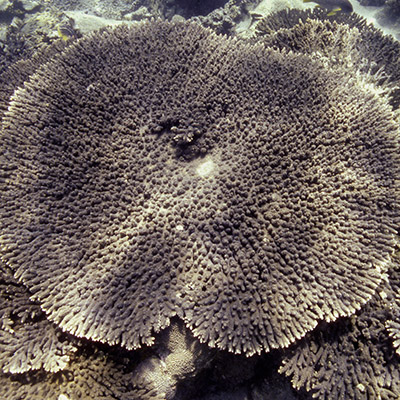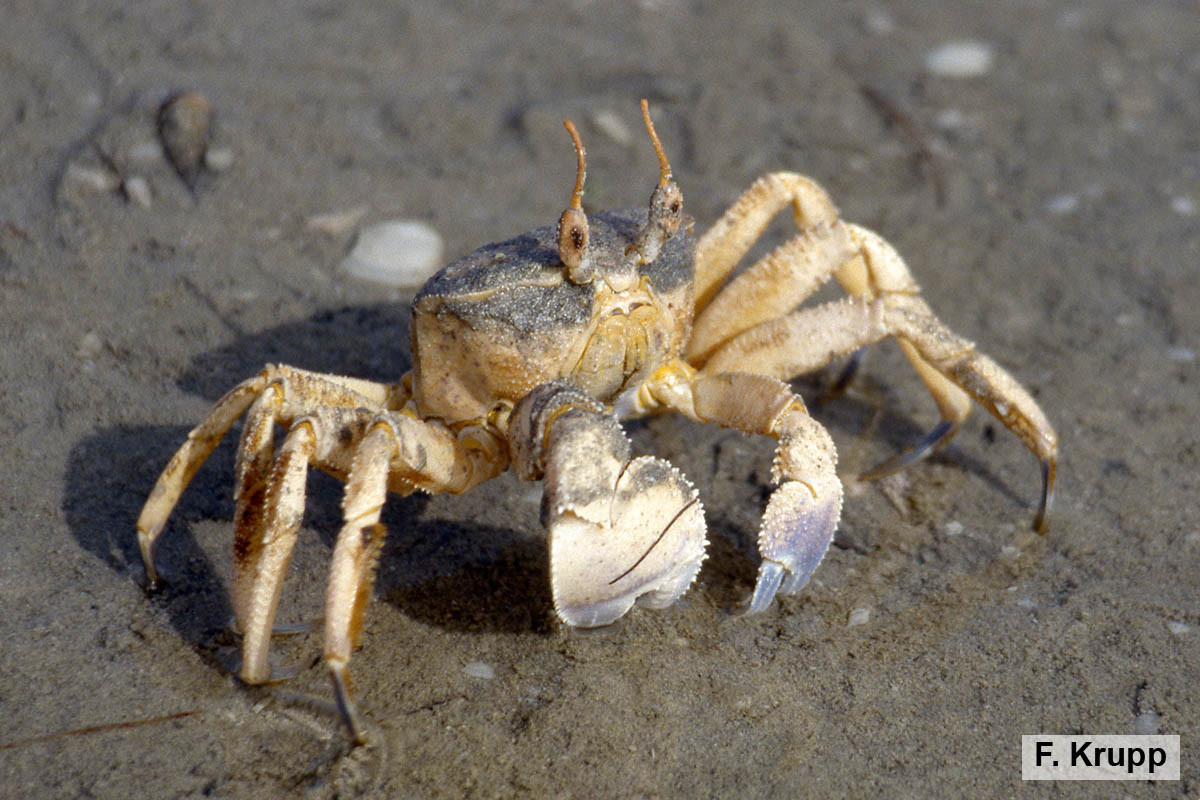الاسم: Ocypode rotundata
الاسم المحلي: سرطان الشبح (بالإنجليزية : سرطان الشبح).
الاسم الشائع:
الاسم العلمي: Ocypode rotundata
التصنيف: Class – malacostracans; order – crabs (Decapoda); family – ghost crabs and fiddler crabs (Ocypodidae)
ترادف: الصف: القشريات لينة الهيكل. الرتبة: عشرية الأرجل. العائلة: سرطانات الشبح، السرطانات العازفة، (Ocypodidae).
القياس: بلغ طول عينة أنثى تم قياسها 3.5 سنتيمتراً وبدرقة عرضها 6 سنتيمترات وبطول 5 سنتيمترات.
موطن:
يعيش سرطان الشبح جحور معقدة أو بسيطة في المنطقة بين المدية من الشواطئ الرملية، حيث يمثل نوعاً رئيسياً ويتواجد بشكل شائع في الجزر البعيدة عن الشاطئ. يحفر هذا النوع جحوره في المناطق الرذاذية، وهي المناطق التي تقع فوق خط المد المرتفع الربيعي والتي تُرشَق بمياه البحر وتكون غير مغمورة بمياه المحيط. يبني الذكور أبراج رملية أثناء موسم التكاثر. ونادراً ما يشاهد سرطان الشبح، حيث أنه ليلي النشاط بشكل رئيسي وتخرج من جحورها فقط لتتغذى عند الغسق، حيث أنه سرطان سريع الحركة رُمي التغذية وغير متخصص في غذائه ويفترس أيضاً الحيوانات الصغيرة. يعني الإسم العلمي لجنس هذا النوع "سريع القدم" والإسم العام يشير على عادته الليلية ولونه الباهت أو على قدرته على الإختفاء بشكل فجائي.
التوزيع:
ينتشر هذا النوع في شمال غرب المحيط الهندي، ومن الساحل الجنوبي الشرقي لشبه الجزيرة العربية (عُمان) عبر الخليج العربي إلى شمال الهند (شمال ولاية جوجارات). يمثل Ocypode rotundata النوع الوحيد لهذا الجنس الموجود في الخليج العربي وخليج عُمان، وتعتبر جميع التسجيلات الأخرى لهذا الجنس من هذه المنطقة أخطاء تصنيفية.
حالة حفظ النوع:
لم يتم تقييم هذا النوع حتى الآن من قبل المجلس العالمي لصون الطبيعة للقائمة الحمراء للأنواع المهددة بالإنقراض.
الشرح:
تتميز سرطانات الشبح بجسمها العميق صندوقي الشكل وبسطحها الظهري المحدب بشكل خفيف. الدرقة مربعة الشكل عرضها أكبر من طولها إلا أن حوافها الأمامية الجانبية مقوسة ومستديرة والتي تجعلها لا تبدو رباعية الأضلاع. يغطي الدرقة درنات خشنة كثيفة تصبح أقل نحو الجانبين. العيون كبيرة ومستطالة وتشغل الجزء السفلي من حاملات العيون والتي تمتد إلى أقصى ما وراء القرنية وتنتهي ببروز قرني الشكل (الإبرة). الأرجل التي تمتلك المخالب أقصر من أرجل المشي وغير متساوية الطول، حيث تكون أكبر بكثير في الذكور والإناث. المخلب الصغير مدبب في نهايته، والمخلب الأكبر له راحة يد عريضة تمتلك أضلاع صوتية (لإنتاج الصوت) على السطح الداخلي. وهذا العضو المنتج للصوت أقصر بكثير من نصف أقصى طول راحة اليد ويتألف من 10-15 درنة مستطيلة لها أضلاع صغيرة مرتبة بشكل عشوائي. أخر زوج من أرجل المشي أقصر وأنحف من بقية الأزواج الأخرى. لونها في الغالب شاحب لتنسجم مع لون الرمال، بالرغم من أنه يمكن أن تغير لونها لتلائم البيئة المحيطة.








